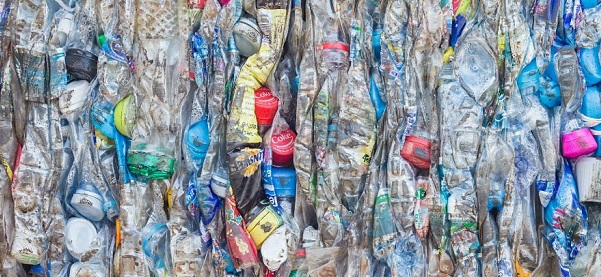A viable solution to our plastic problem couldn’t come soon enough. We’ve been piling it up in landfills that kill people, burying it underground, and letting it accumulate in the oceans to form giant floating trash islands.
Yep, our global response to plastic waste is pretty much the equivalent of shoving everything under the bed and hoping it will magically stop being a problem, but by 2050, it’s estimated that there will be more plastic than fish in our oceans.
As Fiona MacDonald reported for us earlier this year, 95 percent of plastic is thrown out after being used just once, and 8 million tonnes of plastic - or one garbage truck-full every minute - ends up in our oceans each year.
"If no action is taken, this is expected to increase to two [truck-fulls] per minute by 2030 and four per minute by 2050," a World Economic Forum (WEF) report revealed in January. "In a business-as-usual scenario, the ocean is expected to contain 1 tonne of plastic for every 3 tonnes of fish by 2025, and by 2050, more plastics than fish."
But you don’t need me to tell you that the situation is dire. We’ve seen this building for decades.
The solution is fairly simple - we need to turn plastic waste into a commodity that people can actually use, and given all the hydrogen and carbon that makes up polyethylene, liquid hydrocarbon fuel is the obvious choice.
What’s been holding us back from the dream of recyclable plastics is that even though polyethylene is made from fossil fuels, converting it back to its base parts has been a massive challenge, because of how stable plastic is as a chemical compound.
"If you leave plastic in the ocean or the environment or you bury it underground, it’s going to stay there for hundreds or thousands of years," one of the team, Zhibin Guan, a synthetic polymer chemist at the University of California, Irvine, told Amina Khan at the Los Angeles Times.
Without special treatment, polyethylene will just keep existing in its current state, thanks to the incredibly stable single atomic bonds that give it its structure. If you heat it up enough, these bonds will finally come apart, but not in any practical way.
"[I]f you try to heat them at more than 400 degrees Celsius (which some methods do), they collapse into all kinds of combinations, resulting in a messy mix of gas, oil, wax and char that’s not especially useful," Khan explains.
To address this "low energy efficiency and lack of product control", Guan and his team paired up with researchers from the Shanghai Institute of Organic Chemistry in China to devise a plastic recycling technique that requires a whole lot less heat.
The process uses chemical catalysts that are normally used to produce polymers, and sets them to breaking down polymers instead. The first catalyst breaks apart the hydrogen atoms from the carbon atoms, which causes the carbon atoms to form bonds with each other.
These newly bonded carbon atoms form double, rather than single, bonds, which a second catalyst can come in and break. The separated hydrogen atoms are introduced back into the mix, and the process is repeated a number of times.
All this chopping and changing, deleting, breaking, adding, and rearranging, allows the team to carefully and gradually change the structure of the polyethylene into either a diesel fuel or a wax that can be used for industrial purposes.
Because the process requires heating at around 175 degrees Celsius (347 fahrenheit) - rather than 400 degrees (752 fahrenheit) - to break down the plastic, it uses far less energy than similar techniques. But the downsides are the process is slow - taking about four days to complete - and the catalysts are expensive to use.
More about:
















































